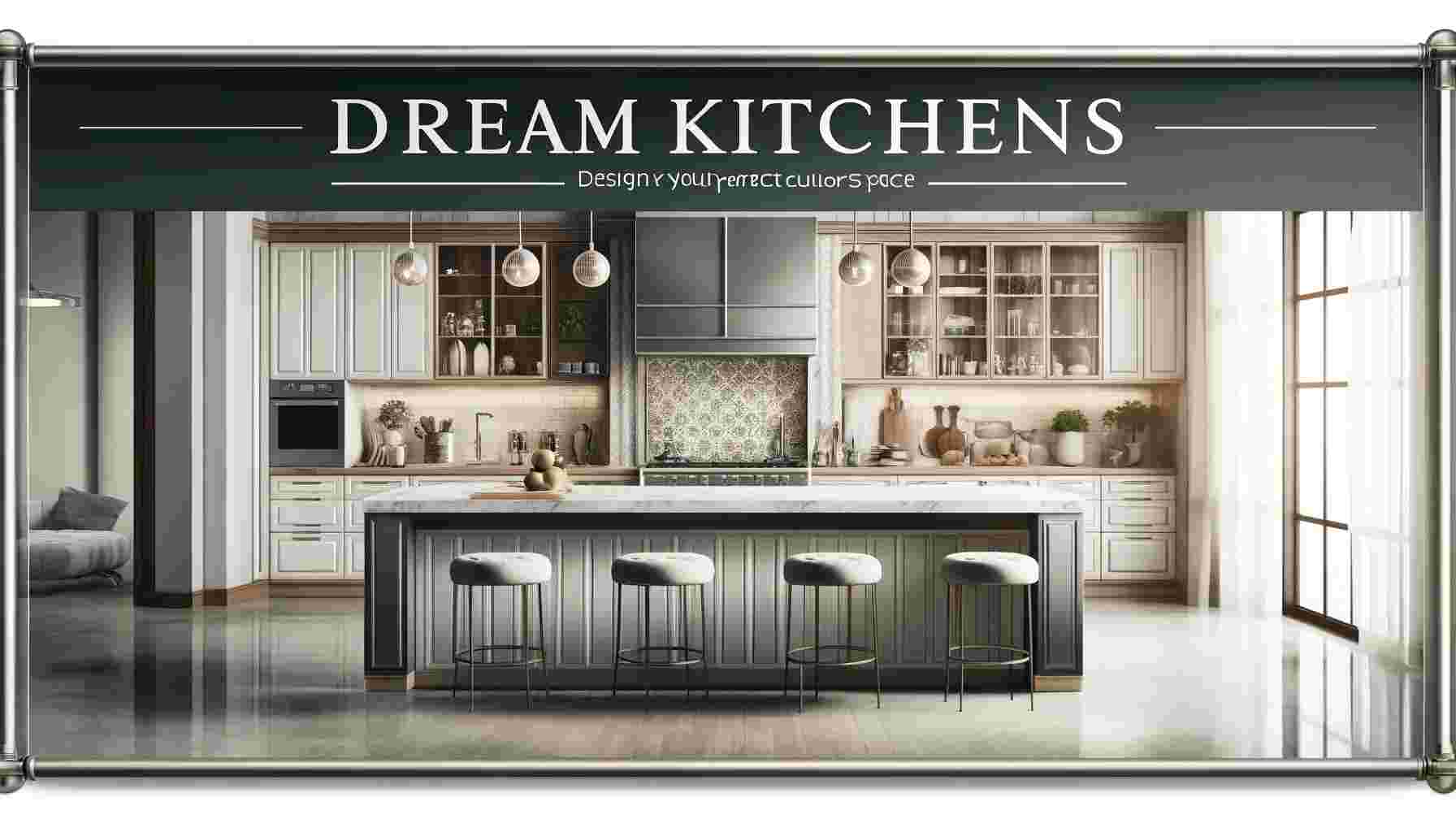Home & Garden
Custom Kitchen Cabinets Toronto: The Ultimate Guide

Custom kitchen cabinets are a popular choice for homeowners in Toronto who want to add a touch of personalization and style to their kitchens. These cabinets are designed and built to fit the specific needs and preferences of each individual homeowner, making them a perfect fit for any kitchen layout. Whether you are looking for a traditional or modern design, custom kitchen cabinets can be tailored to your exact specifications.
One of the biggest advantages of choosing custom kitchen cabinets is the ability to choose from a wide range of materials, colors, and finishes. From classic hardwoods like oak and maple to more modern options like stainless steel and glass, there are endless possibilities when it comes to customizing your cabinets. Additionally, custom cabinets can be designed to fit any space, no matter how small or awkwardly shaped.
Another benefit of custom kitchen cabinets is the added value they can bring to your home. Unlike standard cabinets that are mass-produced and often lack character, custom cabinets are unique and can be a selling point for potential buyers. With the help of a skilled cabinet maker, you can create a kitchen that not only meets your needs but also adds value to your home.
Designing Your Custom Kitchen Cabinets
When it comes to designing custom kitchen cabinets, there are a few important factors to consider. From choosing the right materials to creating a functional layout, every decision you make will impact the overall look and feel of your kitchen. Here are some tips to help you get started:
Choosing the Right Materials
One of the first things to consider when designing custom kitchen cabinets is the material you want to use. There are a variety of options available, including wood, laminate, and metal. Each material has its own unique benefits and drawbacks, so it’s important to do your research and choose the one that best fits your needs.
Wood is a popular choice for custom kitchen cabinets because it is durable, versatile, and comes in a wide range of finishes and styles. Laminate is another option that is more affordable and easy to clean, but may not be as durable as wood. Metal cabinets are also an option, but they can be more expensive and may not fit with every kitchen design.
Style and Aesthetics
Once you have chosen your materials, it’s time to think about the style and aesthetics of your custom kitchen cabinets. Do you want a modern, sleek design or a more traditional, classic look? Are you looking for bold colors or more subtle tones? These decisions will impact everything from the cabinet hardware to the overall layout of your kitchen.
When choosing the style and aesthetics of your custom cabinets, it’s important to keep in mind the overall design of your kitchen. You want your cabinets to complement the other elements in the room, such as countertops, flooring, and appliances.
Functional Layouts and Space Optimization
Finally, when designing custom kitchen cabinets, it’s important to consider the functional layout of your kitchen. This means thinking about how you will use the space and how to optimize it for your needs. For example, do you need more storage space, or do you want to create a more open and airy feel?
There are a variety of design elements you can use to create a functional layout, such as pull-out drawers, lazy susans, and built-in organizers. By taking the time to carefully plan your custom kitchen cabinets, you can create a space that is both beautiful and functional.
Installation and Craftsmanship
Selecting a Reputable Cabinet Maker
When it comes to custom kitchen cabinets, selecting a reputable cabinet maker is crucial. It is important to choose a cabinet maker who has a proven track record of quality craftsmanship and attention to detail. A reputable cabinet maker will listen to your specific needs and work with you to create a design that meets your exact requirements. They should also be able to provide you with references and examples of their previous work.
The Installation Process
The installation process for custom kitchen cabinets can vary depending on the specific design and materials used. However, a professional cabinet maker will ensure that the installation process is seamless and stress-free. They will work with you to schedule a convenient installation date and time, and will take care of all the necessary preparation work, including measuring and cutting the cabinets to fit your space.
During the installation process, the cabinet maker will carefully install each cabinet and ensure that they are level and secure. They will also make any necessary adjustments to ensure that the cabinets are functioning properly and meet your expectations.
Quality Assurance and Finishing Touches
After the installation process is complete, a reputable cabinet maker will conduct a thorough quality assurance check to ensure that everything is functioning properly and meets their high standards of craftsmanship. They will also take care of any finishing touches, such as adding hardware and applying a final coat of finish to the cabinets.
Overall, when it comes to custom kitchen cabinets Toronto, selecting a reputable cabinet maker is key. By choosing a professional with a proven track record of quality craftsmanship and attention to detail, you can ensure that your custom cabinets are installed properly and will last for years to come.
Home & Garden
Strategic Consulting: Maximizing Business Potential with Expert Advice

Strategic consulting is a specialized field that focuses on providing expert advice to businesses and organizations in order to help them achieve their goals and objectives. This type of consulting is typically provided by experienced professionals who have a deep understanding of business strategy, management, and operations. The goal of strategic consulting is to help organizations identify opportunities for growth and improvement, and to develop and implement effective strategies to achieve those goals.
One of the key benefits of strategic consulting is that it can help businesses and organizations stay competitive in a rapidly changing marketplace. By working with a strategic consultant, companies can gain valuable insights into industry trends, market dynamics, and customer needs. This information can be used to develop new products, services, and marketing campaigns that are tailored to the needs of their target audience.
Another important aspect of strategic consulting is that it can help businesses and organizations improve their operational efficiency and effectiveness. By analyzing business processes, identifying areas for improvement, and implementing best practices, strategic consultants can help companies streamline their operations, reduce costs, and increase productivity. This can help businesses become more agile and responsive to changes in the marketplace, which can ultimately lead to increased profitability and growth.
Fundamentals of Strategic Consulting
Defining Strategic Consulting
Strategic consulting is a type of consulting that focuses on providing advice to companies on how to improve their overall performance. The main objective of strategic consulting is to help companies develop a long-term plan that aligns with their goals and objectives. Strategic consultants work with companies to identify their strengths and weaknesses, and then help them develop a plan to improve their performance.
Key Objectives and Deliverables
The key objectives of strategic consulting are to help companies identify their core competencies, develop a long-term plan, and improve their overall performance. Strategic consultants work with companies to identify areas where they can improve their performance, and then develop a plan to achieve those improvements.
The deliverables of strategic consulting can vary depending on the needs of the company. Some common deliverables include a strategic plan, a performance improvement plan, and a roadmap for achieving the company’s goals and objectives.
Role of a Strategic Consultant
The role of a strategic consultant is to provide advice and guidance to companies on how to improve their overall performance. Strategic consultants work closely with companies to identify their strengths and weaknesses, and then develop a plan to improve their performance.
Some of the key responsibilities of a strategic consultant include conducting research, analyzing data, developing a strategic plan, and providing guidance and support to the company throughout the implementation process.
Overall, strategic consulting can be a valuable tool for companies looking to improve their overall performance. By working with a strategic consultant, companies can develop a long-term plan that aligns with their goals and objectives, and then work to achieve those goals over time.
Implementing Strategic Consulting
Assessment and Analysis
Before implementing strategic consulting, it is essential to conduct a thorough assessment and analysis of the organization’s current state. This involves evaluating the organization’s strengths, weaknesses, opportunities, and threats. The assessment and analysis process helps to identify the gaps in the organization’s current strategy and operations, which strategic consulting can help address.
To conduct an effective assessment and analysis, strategic consultants use various tools and techniques, such as SWOT analysis, PESTEL analysis, market research, and customer surveys. The results of the assessment and analysis provide the foundation for developing a strategic plan that aligns with the organization’s goals and objectives.
Strategic Planning and Development
Once the assessment and analysis are complete, strategic consultants develop a strategic plan that outlines the organization’s long-term goals and objectives. The plan includes specific action steps and timelines for achieving the desired outcomes.
Strategic planning and development involve a collaborative effort between the strategic consultants and the organization’s leadership team. The plan must be aligned with the organization’s mission, vision, and values, and it must take into account the organization’s resources, capabilities, and competitive landscape.
Execution and Change Management
Implementing a new strategy requires effective execution and change management. Strategic consultants work with the organization’s leadership team to ensure that the plan is executed successfully. This involves developing a communication plan, identifying key stakeholders, and establishing metrics to measure progress.
Effective change management is critical to the success of strategic consulting. Change can be challenging, and employees may resist new processes or procedures. Strategic consultants help the organization’s leadership team manage change by providing training, coaching, and support.
In conclusion, implementing strategic consulting requires a comprehensive assessment and analysis, strategic planning and development, and effective execution and change management. Strategic consultants work closely with the organization’s leadership team to develop and implement a plan that aligns with the organization’s goals and objectives.
Home & Garden
Wood Accent Wall: How to Install and Style One in Your Home

Wood accent walls are a popular trend in interior design that adds a warm and natural touch to any room. This design element involves covering one wall with wood planks, creating a focal point that adds texture and depth to the space. The wood can be left natural or painted to match the room’s color scheme, making it a versatile option for any style of decor.
One of the benefits of a wood accent wall is that it can be a DIY project, making it an affordable way to update a room’s look. With a few basic tools and some wood planks, anyone can create a stunning accent wall. Additionally, wood is a sustainable and eco-friendly material, making it a popular choice for those who want to incorporate sustainable design elements into their homes.
When choosing the type of wood for an accent wall, there are many options available, including reclaimed wood, shiplap, and tongue and groove planks. Each type of wood has its own unique look and texture, allowing homeowners to customize their accent wall to fit their personal style. Whether it’s a rustic farmhouse look or a sleek modern design, a wood accent wall is a versatile and timeless design element that can transform any room.
Designing Your Wood Accent Wall
Choosing the Right Wood
When designing a wood accent wall, the type of wood used is crucial for achieving the desired look and feel. Hardwoods such as oak, maple, and walnut are popular choices due to their durability and natural beauty. Softwoods like pine and cedar are also options, but they may require more maintenance and are less resistant to wear and tear.
Selecting a Pattern and Texture
The pattern and texture of the wood can greatly impact the overall design of the accent wall. Vertical or horizontal planks can create a traditional or contemporary look respectively, while a herringbone or chevron pattern can add a unique touch. The texture of the wood can also vary from smooth to rough, depending on the desired aesthetic.
Color Considerations and Finishes
The color of the wood can set the tone for the entire room. Natural wood tones can create a warm and inviting atmosphere, while painted wood can add a pop of color or complement existing decor. Finishes such as stains or sealants can also enhance the wood’s natural beauty and protect it from damage.
When designing a wood accent wall, it’s important to consider the type of wood, pattern and texture, and color and finish. By selecting the right elements, a wood accent wall can transform a room into a cozy and stylish space.
Installation and Maintenance
Tools and Materials
Before installing a wood accent wall, it is important to have the right tools and materials. The following list includes the essential items needed for a successful installation:
- Measuring tape
- Level
- Table saw
- Nail gun or hammer and nails
- Wood glue
- Sandpaper
- Paint or stain (optional)
Step-by-Step Installation Guide
- Measure the wall and purchase enough wood planks to cover the desired area. It is recommended to purchase an extra 10% for waste and mistakes.
- Prepare the wall by removing any existing wallpaper or paint and filling in any holes or cracks.
- Cut the wood planks to the appropriate length and sand any rough edges.
- Apply wood glue to the back of each plank and attach it to the wall, starting from the top and working downwards. Use a level to ensure each plank is straight.
- Nail each plank in place using a nail gun or hammer and nails. It is recommended to nail at least two nails per plank, one at the top and one at the bottom.
- Continue attaching planks until the entire wall is covered. Cut any planks as necessary to fit around outlets or other obstacles.
- Sand the entire wall to smooth out any rough spots or inconsistencies.
- Paint or stain the wall if desired, following the manufacturer’s instructions.
Long-Term Care and Maintenance
To keep a wood accent wall looking its best, it is important to take proper care of it. Here are some tips for long-term care and maintenance:
- Avoid exposing the wall to direct sunlight or extreme temperatures, as this can cause the wood to warp or fade.
- Clean the wall regularly with a dry or slightly damp cloth to remove dust and dirt. Avoid using harsh chemicals or abrasive cleaners.
- If the wall becomes scratched or damaged, sand and refinish the affected area as needed.
- Consider applying a coat of protective sealant to the wall to prevent moisture damage and extend its lifespan.
By following these simple steps, a wood accent wall can add warmth and character to any room for years to come.
Home & Garden
Metal Roof Installers Near Me: Find the Best Local Contractors for Your Project

Metal roofs are a popular choice for homeowners who want a durable and long-lasting roofing solution. However, finding a reliable and experienced metal roof installer can be a challenging task. With so many options available, it can be difficult to know where to start.
Fortunately, there are several Metal Roof Installers Near me for most homeowners. These professionals have the skills and expertise necessary to install metal roofs quickly and efficiently. By choosing a local installer, homeowners can ensure that their roofing project is completed on time and within budget. Whether it’s a new installation or a replacement, a metal roof installer can help homeowners achieve the look and functionality they desire.
Choosing the Right Metal Roof Installer
When it comes to installing a metal roof, choosing the right installer is crucial. Here are some factors to consider when selecting a metal roof installer.
Assessing Installer Credentials
Before hiring a metal roof installer, it is important to assess their credentials. Look for installers who are licensed, insured, and certified. A reputable installer should be able to provide proof of their credentials upon request. Additionally, check their online reviews and ratings to see what other customers have to say about their work.
Understanding Local Building Codes
It is important to choose an installer who is familiar with local building codes. Metal roof installation must meet certain requirements regarding materials, installation methods, and safety measures. A knowledgeable installer will be able to ensure that your metal roof is installed to meet these codes and regulations.
Comparing Quotes and Services
When choosing a metal roof installer, it is important to compare quotes and services. Get quotes from multiple installers and compare their pricing, warranties, and services. Don’t be swayed by the lowest price alone – consider the quality of materials and workmanship as well. Additionally, look for installers who offer a comprehensive range of services, such as repairs and maintenance, to ensure that your metal roof is well-cared for in the long run.
By considering these factors, you can choose a metal roof installer who will provide high-quality workmanship and ensure that your metal roof is installed to meet local building codes and regulations.
Installation Process Overview
Initial Roof Inspection
Before the installation process begins, a professional metal roof installer will conduct a thorough inspection of the roof to assess its current condition. This inspection will help to identify any issues that may need to be addressed before the installation process begins. During the inspection, the installer will also take measurements to ensure that the new roof will fit properly.
Material Selection
Once the inspection is complete, the installer will work with the homeowner to select the best materials for their metal roof. This may include choosing the type of metal, the color, and any additional features such as insulation or ventilation. The installer will also provide recommendations based on the homeowner’s needs and budget.
Installation Techniques
After the materials have been selected, the installation process can begin. The installer will use a variety of techniques to ensure that the roof is installed properly and securely. This may include using specialized tools and equipment, as well as following specific installation guidelines provided by the manufacturer.
Post-Installation Inspection
Once the installation is complete, the installer will conduct a final inspection to ensure that the roof has been installed properly and meets all safety and quality standards. This inspection will also help to identify any issues that may need to be addressed before the project is considered complete.
Overall, a professional metal roof installer will use their knowledge and expertise to ensure that the installation process is completed efficiently and effectively. By following best practices and using high-quality materials, homeowners can be confident that their new metal roof will provide long-lasting protection for their home.
-

 Tech11 months ago
Tech11 months agoExpotab.com Login: How to Access Your Account
-

 Home & Garden10 months ago
Home & Garden10 months agoWood Accent Wall: How to Install and Style One in Your Home
-

 Health11 months ago
Health11 months agoOCD Therapist: How to Find the Right One for You
-

 Home & Garden11 months ago
Home & Garden11 months agoBasement Services Toronto: Expert Solutions for Your Home’s Lower Level
-

 Health11 months ago
Health11 months agoWellHealthOrganic Buffalo Milk Tag: The Benefits of Drinking Organic Milk
-

 Tech11 months ago
Tech11 months agoModyukle: A Comprehensive Guide to Understanding
-

 Blog11 months ago
Blog11 months agoAndre Hakkak Net Worth: A Look at the Successful Entrepreneur’s Wealth
-

 Tech11 months ago
Tech11 months agoNetwyman Blogs: A Comprehensive Guide to the Best Tech Blogs Online





